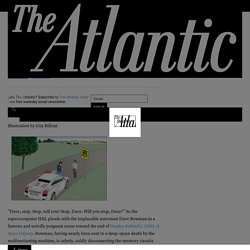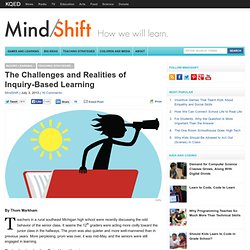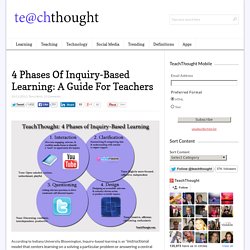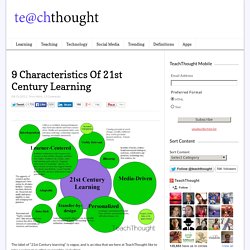

Project Based Learning. I’ve been teaching using a project-based learning pedagogy since mid-2010 when I was introduced to PBL by my friend, Dean Groom.

Since then I have had some wonderful learning experiences with PBL and I enjoy sharing both my successes and failures and experiments in learning on my blog. I thought it’d be helpful for other people if I put all of my PBL-related posts on one page, just in case you’re starting out and you want to see how another teacher is doing it too. If you have any questions, just post a comment below or send me a tweet on twitter My VERY first experience with PBL – and it was hard work and had serious issues! My post might help some of your PBL newbies feel less anxious, maybe! This is a reflection on my very first PBL experience with Year 10 – it looks at why it may not have been 100% successful. Interest in PBL from teachers in my local area really started happening at the beginning of 2011.
Resources and Tools for PBL Start to Finish. Tips for downloading: PDF files can be viewed on a wide variety of platforms -- both as a browser plug-in or a stand-alone application -- with Adobe's free Acrobat Reader program.

Click here to download the latest version of Adobe Reader. Documents to Help You Get Started The Hunger Games Project Documents Below are sample project-based learning documents from teachers Mary Mobley (English) and Michael Chambers (world history) of Manor New Technology High School in Manor, Texas. They team-teach a sophomore world studies class. Back to Top Culture at Manor New Tech High School. RoboCup Junior. Free Lego NXT MindStorms NXT-G Robotics Challenges Tutorials. At the request of Tasmanian teachers Miss Clare Neilson and recently retired Mrs.

Juanita Airey, activities using Lego's NXT 1 MindStorms Robots have been developed for use in School-based 2-hour sessions. Some, but not all, will work with the new NXT 2 kit (click here for more information). The tutorials are presented as a series of Challenges, which are gradually being converted for Web use. Challenges with an "M" after the challenge number include mentor notes. Challenge numbers greater than 100 use components that are not in the NXT 1.0 Retail or Educational Lego kits, but are available for separate purchase. Is Google Making Us Stupid? Illustration by Guy Billout "Dave, stop.

Stop, will you? Stop, Dave. Will you stop, Dave?” So the supercomputer HAL pleads with the implacable astronaut Dave Bowman in a famous and weirdly poignant scene toward the end of Stanley Kubrick’s 2001: A Space Odyssey. I can feel it, too. I think I know what’s going on. For me, as for others, the Net is becoming a universal medium, the conduit for most of the information that flows through my eyes and ears and into my mind. I’m not the only one. The Challenges and Realities of Inquiry-Based Learning. Inquiry Learning Teaching Strategies Getty By Thom Markham Teachers in a rural southeast Michigan high school were recently discussing the odd behavior of the senior class.

It seems the 12th graders were acting more civilly toward the junior class in the hallways. The prom was also quieter and more well-mannered than in previous years. The teachers’ explanation: Project-based learning. Here’s the back story. Stories like this are about to become more important to educators. This is a steep challenge because it forces education to cross a philosophic divide. JIBLM.org - Journal of Inquiry-Based Learning in Mathematics - IBL Course Notes in Mathematics. 4 Phases of Inquiry-Based Learning: A Guide For Teachers. According to Indiana University Bloomington, Inquiry-based learning is an “instructional model that centers learning on a solving a particular problem or answering a central question.

There are several different inquiry-based learning models, but most have several general elements in common: Learning focuses around a meaningful, ill-structured problem that demands consideration of diverse perspectivesAcademic content-learning occurs as a natural part of the process as students work towards finding solutionsLearners, working collaboratively, assume an active role in the learning processTeachers provide learners with learning supports and rich multiple media sources of information to assist students in successfully finding solutionsLearners share and defend solutions publicly in some manner” The process itself can be broken down into stages, or phases, that help teachers frame instruction.
9 Characteristics Of 21st Century Learning. The label of “21st Century learning” is vague, and is an idea that we here at TeachThought like to take a swing at as often as possible, including: –weighing the magic of technology with its incredible cost and complexity –underscoring the potential for well thought-out instructional design –considering the considerable potential of social media platforms against its apparent divergence from academic learning Some educators seek out the ideal of a 21st century learning environment constantly, while others prefer that we lose the phrase altogether, insisting that learning hasn’t changed, and good learning looks the same whether it’s the 12th or 21st century.

At TeachThought, we tend towards the tech-infused model, but do spend time exploring the limits and challenges of technology, the impact of rapid technology change, and carefully considering important questions before diving in head-first. The size of the circles on the map are intended to convey priority. 1. 2. 3. 4. 5. 6. 7. 8. Few Great Ways to Teach Skills like Critical thinking and Problem Solving. The Inside-Out School: A 21st Century Learning Model.
The Inside-Out School: A 21st Century Learning Model by Terry Heick As a follow-up to our 9 Characteristics of 21st Century Learning we developed in 2009, we have developed an updated framework, The Inside-Out Learning Model.

The goal of the model is simple enough–not pure academic proficiency, but instead authentic self-knowledge, diverse local and global interdependence, adaptive critical thinking, and adaptive media literacy. By design this model emphasizes the role of play, diverse digital and physical media, and a designed interdependence between communities and schools. The attempted personalization of learning occurs through new actuators and new notions of local and global citizenship. Here, families, business leaders, humanities-based organizations, neighbors, mentors, higher-education institutions, all converging to witness, revere, respond to, and support the learning of its own community members.
The 9 Domains Of the Inside-Out Learning Model 1. 2. 3. 4. 5.